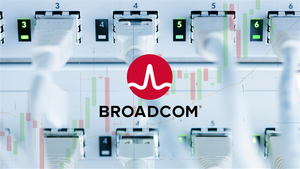
Oracle (NYSE: ORCL), a venerable titan of enterprise software, is undergoing a profound metamorphosis, aggressively re-sculpting its identity into a formidable player in the burgeoning artificial intelligence (AI) cloud market. This strategic pivot, marked by colossal investments in AI-first infrastructure and groundbreaking partnerships with industry giants like OpenAI and Nvidia (NASDAQ: NVDA), has propelled the company into the spotlight, transforming it from a "cloud laggard" to an "AI darling" in the eyes of investors. While its Oracle Cloud Infrastructure (OCI) revenue soars and remaining performance obligations (RPO) skyrocket, signaling robust future growth, this meteoric rise is shadowed by significant financial and operational challenges that demand a closer look.
The company's audacious bet on AI infrastructure, including projected capital expenditures exceeding $35 billion for fiscal year 2026, presents a double-edged sword. While it positions Oracle as a critical enabler for the global AI build-out, it also raises concerns about the immediate impact on free cash flow, the intricate dance of overcoming global chip shortages, the inherent execution risks associated with large-scale deployments, and the ultimate sustainability of its AI-driven growth amidst an intensely competitive landscape. This article delves into the potential headwinds Oracle faces, dissecting the complexities beneath its glittering AI success story.
Oracle's Bold Bet: Billions in CapEx, Chip Hurdles, and Gigawatt Dreams
Oracle's ambitious foray into the AI cloud market is far from a gradual evolution; it's a full-throttle expansion, underpinned by monumental financial commitments and strategic partnerships designed to establish Oracle Cloud Infrastructure (OCI) as a foundational pillar of the global AI ecosystem. At the heart of this strategy is the OCI Generative AI service, a platform designed to seamlessly integrate large language models (LLMs) from partners like Cohere, Meta (NASDAQ: META), and soon, Google Gemini, into enterprise applications, offering unprecedented flexibility for fine-tuning with proprietary data. This aggressive push also sees generative AI capabilities embedded directly into Oracle's venerable database portfolio, including the new Oracle AI Database service, aiming to accelerate application development and harness private data for AI models.
The sheer scale of Oracle's ambition is perhaps best encapsulated by the "Stargate project," a multi-billion-dollar global initiative to construct a network of cutting-edge AI data centers. A flagship of this project is the planned gigawatt-scale facility in Abilene, Texas, slated to be a primary hub for training massive AI models, particularly for OpenAI (Private: OPENAI). Oracle's multi-cloud strategy, integrating OCI with rival cloud environments like Amazon Web Services (NASDAQ: AMZN), Microsoft Azure (NASDAQ: MSFT), and Google Cloud (NASDAQ: GOOGL), further underscores its intent to be an omnipresent force, reducing vendor lock-in and driving database adoption across platforms. This strategy has led to an unprecedented surge in Oracle's remaining performance obligations (RPO), which have ballooned to $455 billion—a staggering 359% year-over-year increase, fueled by multi-billion-dollar cloud contracts with AI giants like OpenAI, xAI (Private: XAI), Meta (NASDAQ: META), NVIDIA (NASDAQ: NVDA), and AMD (NASDAQ: AMD). The company projects OCI revenue to grow an astounding 77% to $18 billion in fiscal year 2026, with an audacious long-term target of $144 billion in annual cloud revenue by fiscal year 2030.
However, such a colossal undertaking comes with equally colossal financial implications. Oracle's CEO, Safra Catz, has announced that capital expenditures (CapEx) are projected to reach approximately $35 billion for fiscal year 2026, a dramatic increase from earlier estimates. This monumental investment has plunged Oracle's free cash flow into negative territory, with analysts expecting it to remain negative for a second consecutive year. While operating cash flow remains robust, the sheer outflow for data center construction, particularly for revenue-generating equipment, is outstripping it, creating a period of significant financial strain.
Furthermore, Oracle's AI ambitions are inextricably linked to the availability of advanced AI chips, predominantly NVIDIA GPUs. The company plans to acquire an estimated $40 billion worth of NVIDIA's GB200 AI chips to power the Abilene data center alone. This singular reliance on NVIDIA, coupled with Oracle's decision not to develop its own custom AI silicon—unlike its hyperscaler competitors—exposes it to significant supply chain vulnerabilities and pricing pressures. While Oracle expects chip shortages, which have previously slowed its cloud capacity expansion, to be resolved by early fiscal year 2026, any prolonged or recurring disruptions could severely impede its ability to scale data centers, limit AI training capacity, and consequently, stifle OCI growth.
The execution risks associated with deploying such large-scale global infrastructure are also immense. Building gigawatt-scale data centers across dozens of new regions, including expanding to 71 regions from the current 34, demands seamless logistics, robust power infrastructure, and intricate project management. Supply chain delays beyond chips, geopolitical factors, and regulatory hurdles—such as the U.S. security concerns delaying the UAE phase of the Stargate project—could all derail timelines and inflate costs. While Oracle's "asset-light" expansion model focuses on leasing rather than outright construction, the capital intensity remains immense, and converting its massive RPO into sustained, profitable revenue growth hinges on near-flawless execution amidst fierce competition from established cloud leaders. The current valuation of Oracle's stock already prices in significant expectations for this success, leaving minimal margin for error.
The Shifting Sands of Power: Who Gains and Who Contends in Oracle's AI Gambit
Oracle's aggressive pivot into the AI cloud arena has sent ripples throughout the technology ecosystem, creating a clear cohort of beneficiaries and intensifying the competitive pressures on established giants. At the forefront of the winning side is, unequivocally, Oracle (NYSE: ORCL) itself. The company's strategy to become the "go-to place for AI workloads," coupled with its "neutral" stance—avoiding the development of proprietary large AI models that could compete with its clients—has proven remarkably effective. Its soaring Oracle Cloud Infrastructure (OCI) revenue and unprecedented remaining performance obligations (RPO) of $455 billion underscore a dramatic increase in market share within the crucial AI infrastructure segment. Analysts are revising revenue forecasts upwards, with some predicting OCI sales could reach $108 billion by fiscal 2029, propelling Oracle's market valuation closer to the coveted $1 trillion mark.
Another significant group of winners comprises the chip manufacturers, particularly NVIDIA (NASDAQ: NVDA) and AMD (NASDAQ: AMD). Oracle's commitment to substantial investments in NVIDIA's high-performance chips, including the GB200 and Blackwell GPUs, for its AI superclusters translates directly into massive demand for NVIDIA's offerings. Similarly, Oracle's selection of AMD's MI300X accelerators for its latest AI superclusters signifies a strategic move towards diversifying its chip suppliers and provides AMD with a significant opportunity to capture market share in the booming AI chip segment. Both companies have seen their shares rally following Oracle's strong earnings reports, reflecting their integral role in powering the next generation of AI infrastructure.
Key partners and customers are also clear beneficiaries. OpenAI (Private: OPENAI), which has chosen OCI to extend Microsoft Azure's AI platform, gains access to Oracle's massive computing power for training and deploying advanced AI models. Meta Platforms (NASDAQ: META) has signed significant cloud contracts with Oracle, utilizing OCI's high-speed networking and powerful GPUs for its Llama-based AI models, securing essential infrastructure for its ambitious AI endeavors. Elon Musk's xAI (Private: XAI) and ByteDance (Private: BYTEDANCE) (TikTok's parent company) are also major customers, leveraging Oracle's resources. ByteDance's substantial engagement has even spurred the development of Johor, Malaysia, into a significant AI hub, further highlighting the deep integration and mutual benefit of these partnerships.
On the other side of the ledger, established cloud giants like Amazon Web Services (NASDAQ: AMZN), Microsoft Azure (NASDAQ: MSFT), and Google Cloud (NASDAQ: GOOGL) find themselves facing intensified competition in the high-growth AI infrastructure segment. While these hyperscalers still dominate the overall cloud market, Oracle's aggressive land-and-expand strategy is demonstrably chipping away at their AI market share. Reports from firms like Cleveland Research suggest that AWS, in particular, may be underperforming in AI market share compared to its rivals, including Oracle. While Microsoft Azure benefits from its close ties with OpenAI, Oracle's ability to attract OpenAI to extend its platform using OCI underscores the growing competitive pressure.
The strategies of these traditional cloud leaders are evolving in response. While they continue their own heavy investments in AI, the rise of Oracle as a specialized AI infrastructure provider forces them to re-evaluate their differentiation. The multi-cloud partnerships, wherein Oracle Database services run within AWS, Azure, and Google Cloud environments, while beneficial for customers seeking flexibility, also highlight Oracle's enduring database strength and its ability to penetrate rival clouds. This could potentially divert certain revenue streams or customer engagements from their native database offerings. Ultimately, while not "losers" in an absolute sense, these cloud titans must contend with a more formidable and focused competitor in the rapidly expanding and highly strategic AI infrastructure market, potentially seeing some pressure on their growth rates in specific AI segments as Oracle gains significant traction.
Beyond the Cloud: Oracle's AI Gambit Reshaping the Tech Landscape
Oracle's aggressive entry into the AI cloud market extends far beyond its balance sheets, creating profound ripple effects across the technology industry and influencing several critical trends. This strategic pivot positions Oracle not just as another cloud vendor, but as a critical utility provider in the global AI build-out, with implications for data sovereignty, multi-cloud strategies, and the evolving nature of AI infrastructure itself.
One of the most significant trends Oracle is capitalizing on is Sovereign AI. As governments and enterprises globally express increasing concerns over data residency, privacy, and control, Oracle's distributed cloud infrastructure, including offerings like Oracle EU Sovereign Cloud and Government Cloud regions, provides a compelling solution. By enabling the deployment of AI factories locally with enhanced data controls, Oracle directly addresses regulatory requirements like GDPR and the recently enacted EU AI Act. This alignment with policy-driven growth and national security concerns provides Oracle with a distinct competitive advantage, particularly within highly regulated sectors and for national AI initiatives. Executive orders, such as the U.S. Executive Order 14117 restricting data transactions with countries of concern, further bolster the appeal of domestic cloud providers like Oracle with high-security certifications.
Furthermore, Oracle has strategically embraced and championed multi-cloud strategies. Moving beyond mere compatibility, Oracle has forged deep integrations with its rivals, including AWS, Microsoft Azure, and Google Cloud, allowing enterprises to leverage Oracle's robust database services and AI capabilities while utilizing other cloud providers for diverse workloads. This approach effectively mitigates vendor lock-in, optimizes performance, and offers cost efficiencies, driving explosive growth in Oracle's multi-cloud database revenue. This flexibility is a significant differentiator, especially as organizations seek hybrid and best-of-breed solutions in their complex IT environments.
Regarding the commoditization of AI infrastructure, Oracle's approach is nuanced. While the cost of high-end GPUs and associated infrastructure is exorbitant, making AI a "luxury tier investment," Oracle aims to differentiate by offering superior efficiency and strategic scaling. The company boasts its ability to construct large, economical AI clusters that perform faster due to its Gen 2 cloud architecture. By focusing on performance and cost-effectiveness in delivery and integration, Oracle is making high-performance AI infrastructure more accessible for enterprise deployment. However, the fundamental cost of underlying hardware, primarily GPUs, means that true commoditization of the raw compute power remains a challenge, and Oracle's value proposition lies in optimizing the access and utilization of this powerful hardware.
The ripple effects on competitors are undeniable. Oracle's rapid growth and ability to attract major AI players like OpenAI, xAI, and Meta have forced dominant hyperscalers to reassess and diversify their own AI infrastructure strategies. While they maintain overall cloud dominance, Oracle is carving out a significant niche in the high-stakes AI compute market. On the partner front, Oracle's collaborations with NVIDIA and leading AI developers are creating a symbiotic ecosystem where Oracle provides the foundational infrastructure, and partners drive cutting-edge AI innovation. This also extends to the broader supply chain, where Oracle is embedding AI directly into its Fusion Cloud Supply Chain & Manufacturing (SCM) applications. These AI-driven enhancements aim to optimize workflows, automate tasks, and improve decision-making across procurement, inventory, and logistics, promising a more intelligent and agile global supply chain network.
Historically, Oracle's current AI cloud surge represents a remarkable "narrative reset." Long perceived as having "missed the shift to cloud computing" and trailing behind hyperscalers, Oracle is now leveraging its foundational strengths in databases, its "neutral" platform, and aggressive AI investments to redefine its role. This transformation echoes instances where legacy tech giants, initially slow to adapt, successfully pivoted by identifying and dominating crucial emerging segments, much like IBM's pivot to services or Microsoft's resurgence under Satya Nadella. Oracle is now strategically positioned as a "critical utility" in the global AI build-out, akin to the foundational role its relational databases played in previous technological eras.
The Road Ahead: Navigating Growth, Capital, and Competition
Oracle's audacious AI cloud strategy sets the stage for a dynamic period of aggressive growth and intensified competition, with both short-term triumphs and long-term strategic challenges. In the short-term (next 1-3 years), Oracle is poised for explosive revenue growth, driven by its massive Remaining Performance Obligations (RPO) of $455 billion and an IaaS revenue forecast to surge by 77% to $18 billion in fiscal year 2026. This trajectory is fueled by critical partnerships with AI powerhouses like NVIDIA (NASDAQ: NVDA), Meta (NASDAQ: META), ByteDance (Private: BYTEDANCE), OpenAI (Private: OPENAI), xAI (Private: XAI), and Google (NASDAQ: GOOGL), all leveraging Oracle Cloud Infrastructure (OCI) for large-scale AI training and inference. The rapid expansion of its infrastructure, including 40 new data centers globally and reaching its 101st cloud region in Q3 2025, underscores its commitment to meeting this surging demand. Oracle also sees significant upsell opportunities by embedding AI agents directly into its vast installed base of enterprise software and databases, enhancing stickiness and value for its customers.
Looking further into the long-term (3+ years), Oracle aspires to achieve dominance in AI-as-a-service for enterprise adoption, envisioning itself as the foundational "infrastructure operating system" for enterprise AI. By deeply integrating AI capabilities with its widely used databases and ERP systems, Oracle aims to replicate Microsoft's (NASDAQ: MSFT) historical role with PC operating systems, but for the enterprise AI domain. Its projected OCI revenue of $144 billion by fiscal 2030 suggests a scale comparable to Google Cloud (NASDAQ: GOOGL), potentially challenging and outmaneuvering established hyperscalers in specific enterprise segments. While actively involved in AI training, Oracle views the AI inference market as a larger, long-term opportunity, indicating a strategic pivot towards operationalizing AI models at scale within enterprises. The company's distributed cloud strategy will also be critical in delivering global and sovereign AI solutions, addressing diverse performance, security, and data sovereignty requirements.
However, Oracle's ambitious growth trajectory necessitates several strategic pivots and careful management. The company faces immense capital expenditure (CapEx) pressure, with $35 billion planned for this year and a projected peak of $88 billion by fiscal 2030, which could lead to several years of negative free cash flow. Efficient allocation and return on these investments will be paramount. Successfully converting its colossal RPO into actual revenue requires flawless execution and scaling of operations, balancing aggressive infrastructure build-out with maintaining long-term profitability. Continuous innovation in its AI offerings and infrastructure will be vital to sustain its competitive edge, particularly as hyperscalers intensify their own AI investments. While its hybrid data center strategy has been successful, Oracle may need to strategically enhance its self-build capabilities to gain greater control and cost efficiencies, aligning more closely with other major hyperscalers over time.
Emerging market opportunities for Oracle include leveraging its deep enterprise penetration to drive AI adoption across various industries, capitalizing on specialized AI training and inference workloads, and developing industry-specific AI solutions for sectors like healthcare (via Oracle Cerner), finance, retail, and supply chain. The growing global demand for localized cloud services and data sovereignty also offers significant tailwinds for Oracle's distributed cloud model. Yet, challenges abound, including intense competition from dominant hyperscalers, the sheer capital intensity of continuous infrastructure investments, and the critical need to attract and retain top AI and cloud engineering talent. Oracle must also skillfully navigate concerns around interoperability and potential vendor lock-in, given its historical proprietary nature, even while promoting its multi-cloud strategy.
In a best-case scenario, Oracle flawlessly executes its strategy, becoming a leading "infrastructure operating system" for enterprise AI, surpassing Google Cloud's market size by 2030. A more likely scenario sees Oracle continuing its strong growth in OCI and AI infrastructure, carving out a formidable specialized niche in enterprise AI, LLM training, and inference. It will be indispensable for many large enterprises and AI startups, maintaining a strong third or fourth position in the broader cloud market. However, a worst-case scenario could see overaggressive CapEx leading to prolonged negative free cash flow and impacting investor confidence. Intense competition, coupled with a potential "AI winter" if tangible economic returns from AI investments falter or a broader economic downturn occurs, could diminish demand, leaving Oracle with underutilized and expensive infrastructure.
The sustainability of AI demand is widely considered a structural shift, with projections of trillions in future infrastructure spending, reinforcing Oracle's robust RPO. However, this hinges on enterprises realizing significant economic returns. Oracle's strong performance has put its larger cloud rivals on notice. Their competitive responses are likely to include increased AI infrastructure investments, enhanced generative AI service offerings, and potential pricing pressure. Nevertheless, Oracle's unique vertical integration, cost structure, and enterprise focus provide a durable competitive moat for specific segments of the AI cloud market.
Conclusion: Oracle's High-Stakes AI Gamble
Oracle's aggressive foray into the AI cloud sector marks a pivotal transformation for the long-standing database giant, repositioning it from a historical software pure-play and cloud computing laggard to a burgeoning AI infrastructure powerhouse. This strategic shift is driven by an "astonishing" surge in demand for high-performance AI compute, fundamentally altering Oracle's market perception and future trajectory.
The key takeaways from Oracle's AI gamble are its massive growth projections, underpinned by a colossal $455 billion in Remaining Performance Obligations (RPO) and multi-billion-dollar deals with AI industry titans. Its strategic advantages in AI infrastructure, including gigawatt-scale data centers optimized for AI workloads, securing access to crucial NVIDIA (NASDAQ: NVDA) GPUs, faster data networks, and a "neutral" cloud provider stance, have positioned it as an appealing platform for major AI players. Furthermore, its multi-cloud and full-stack AI approach, offering everything from foundational infrastructure to AI-enhanced enterprise applications, streamlines AI adoption for businesses. This comprehensive strategy, alongside its rapid growth in Oracle Cloud Infrastructure (OCI), signals a significant potential to narrow the gap with dominant hyperscalers.
Oracle's transformation is more than a temporary surge; it's a strategic repositioning that has cemented its place at the center of one of the most significant shifts in computing history. The company has successfully reinvented itself from a perceived cloud laggard to an "AI market darling," offering a compelling growth story with multi-year revenue visibility. Its focus on providing essential AI infrastructure and integrating AI into its enterprise applications could lead to a lasting impact on how businesses leverage artificial intelligence.
However, while the opportunity is immense, the risks are equally substantial. Oracle's ambitious growth projections necessitate massive capital outlays for building new gigawatt-scale data centers, with plans for $35 billion in spending this year alone. This accelerated spending has already led to negative free cash flow and raises concerns about potential execution delays, cost overruns, and near-term pressure on operating margins. Client retention, potential client self-building of data centers, and fierce competition from larger, well-resourced hyperscalers pose long-term challenges. Furthermore, Oracle's dramatically surging stock valuation (e.g., 35x P/E ratio) leaves little room for disappointment, making the stock sensitive to any perceived shortfall in growth or execution.
For investors in the coming months, several key indicators warrant close monitoring: how quickly Oracle converts its massive RPO into actual revenue, signifying effective execution of its contracts; the trajectory of its capital expenditures and their impact on free cash flow and operating margins; the success of new AI customer wins and progress on key partnerships like the Stargate project with OpenAI; the rollout and adoption of new AI-centric offerings such as the AI Database; and how Oracle maintains its competitive edge against other hyperscalers. Sustained, high growth in OCI will be crucial to justify its current valuation and long-term prospects. Oracle's AI cloud play presents a compelling growth narrative, propelled by strategic investments and critical partnerships. However, its ambitious targets come with substantial execution and financial risks that warrant careful attention from investors navigating this rapidly evolving technological landscape.





